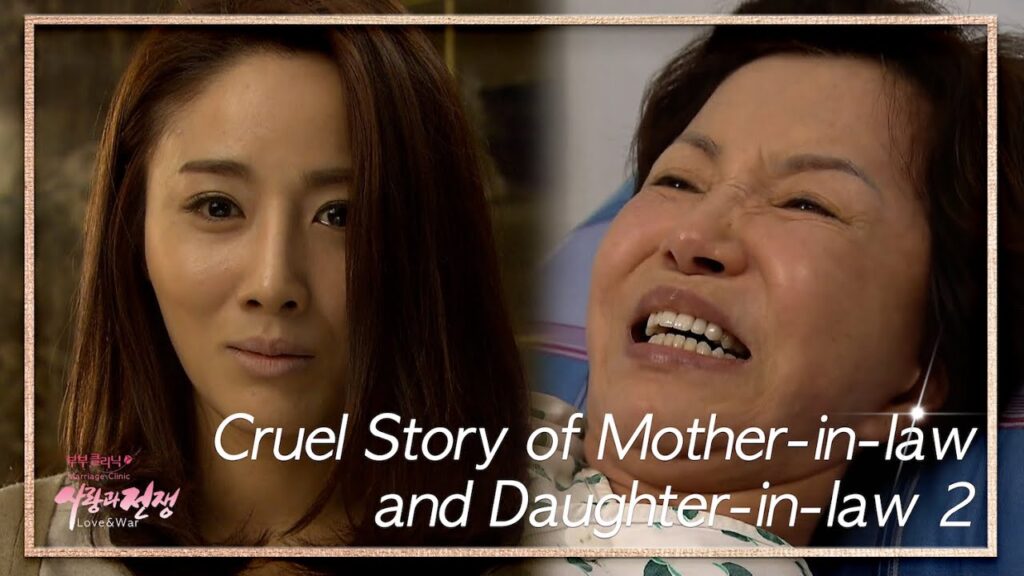
Navigating the Complexities of the Daughter-in-Law Relationship: A Comprehensive Guide
The relationship between a mother-in-law and a daughter-in-law is often portrayed in popular culture as fraught with tension and conflict. While these portrayals can be exaggerated, they often reflect real challenges that many women face as they navigate this significant family dynamic. Understanding the complexities involved and developing effective communication strategies are crucial for building a healthy and fulfilling relationship. This guide aims to provide a comprehensive overview of the daughter-in-law experience, offering insights and practical advice for fostering positive connections and resolving common issues.
Understanding the Dynamics at Play
The daughter-in-law relationship is unique because it involves two women who are deeply invested in the same man, albeit in different ways. The mother-in-law has a lifetime of history and emotional connection with her son, while the daughter-in-law is now his partner and the potential mother of his children. This inherent dynamic can create a sense of competition, jealousy, or possessiveness, even if unintended. It’s essential to acknowledge these underlying emotions and address them openly and honestly.
The Mother-Son Bond: A Lifelong Connection
A mother’s bond with her son is often considered one of the strongest and most enduring. She has nurtured him, guided him, and been a constant presence in his life. When a son brings a daughter-in-law into the family, it can be a significant adjustment for the mother. She may worry about losing her son’s attention, influence, or affection. It’s crucial for the son to reassure his mother of his continued love and appreciation while also prioritizing his relationship with his wife. [See also: The Importance of Setting Boundaries in Family Relationships]
The Daughter-in-Law’s Perspective: Seeking Acceptance and Belonging
For the daughter-in-law, entering a new family can be daunting. She may feel pressure to live up to expectations, impress her mother-in-law, and prove her worthiness as a partner for her husband. She may also struggle to find her place within the family dynamic and feel like an outsider. It’s important for the daughter-in-law to be patient, understanding, and willing to make an effort to connect with her mother-in-law. Open communication and a genuine desire to build a relationship are key.
Common Challenges and Conflicts
Several common issues can arise in the daughter-in-law relationship, leading to conflict and tension. These challenges often stem from differences in values, expectations, and communication styles.
Differing Expectations Regarding Roles and Responsibilities
One common source of conflict is differing expectations about the daughter-in-law’s role in the family. The mother-in-law may have traditional ideas about how a wife should behave, while the daughter-in-law may have different priorities and values. For example, the mother-in-law may expect the daughter-in-law to prioritize family gatherings and holidays, while the daughter-in-law may have other commitments or prefer to spend time with her own family. It’s important to have open and honest conversations about these expectations and find a compromise that works for everyone.
Interference in Parenting Decisions
Parenting is another area where conflicts can easily arise. The mother-in-law may offer unsolicited advice or criticize the daughter-in-law’s parenting choices. This can be particularly challenging for new mothers who are already feeling overwhelmed and insecure. It’s important for the daughter-in-law to establish clear boundaries and communicate her parenting philosophy respectfully. The husband also plays a crucial role in supporting his wife and mediating between her and his mother. [See also: Effective Communication Strategies for Families]
Financial Matters and Gift-Giving
Financial matters and gift-giving can also be sensitive topics. The mother-in-law may feel entitled to offer financial assistance or gifts, which the daughter-in-law may perceive as controlling or condescending. It’s important to handle these situations with grace and gratitude, while also setting boundaries if necessary. Open communication about financial expectations and gift-giving preferences can help prevent misunderstandings and hurt feelings.
Strategies for Building a Positive Relationship
Despite the potential challenges, it’s possible to build a positive and fulfilling relationship with your mother-in-law. By adopting effective communication strategies, setting healthy boundaries, and focusing on shared interests, you can foster a strong and supportive connection.
Open and Honest Communication
Communication is the foundation of any healthy relationship. It’s important to communicate openly and honestly with your mother-in-law, expressing your feelings and needs in a respectful and constructive manner. Avoid passive-aggressive behavior or bottling up your emotions, as this can lead to resentment and conflict. Instead, address issues directly and calmly, focusing on finding solutions that work for both of you.
Setting Healthy Boundaries
Setting boundaries is essential for maintaining a healthy relationship. This means clearly defining your limits and expectations and communicating them assertively to your mother-in-law. For example, you may need to set boundaries regarding unsolicited advice, interference in parenting decisions, or frequency of visits. It’s important to be firm but respectful when setting boundaries, and to consistently enforce them. [See also: The Art of Saying No Without Guilt]
Finding Common Ground
Focusing on shared interests and finding common ground can help strengthen your bond with your mother-in-law. Try to identify activities or hobbies that you both enjoy and spend time together doing them. This could include cooking, gardening, shopping, or attending cultural events. Engaging in shared activities can create positive experiences and foster a sense of connection.
Showing Appreciation and Respect
Showing appreciation and respect is crucial for building a positive relationship. Make an effort to acknowledge your mother-in-law’s contributions to the family and express your gratitude for her support. Remember to treat her with respect, even when you disagree with her. Small gestures of kindness, such as sending a thank-you note or offering a helping hand, can go a long way in fostering goodwill.
The Husband’s Role: A Crucial Mediator
The husband plays a critical role in mediating between his wife and his mother. He should be supportive of both women and strive to maintain a balanced relationship with each of them. He should also be willing to address any conflicts that arise and help facilitate communication. It’s important for the husband to be honest and transparent with both his wife and his mother, and to avoid taking sides. By acting as a mediator, he can help create a more harmonious family dynamic.
Seeking Professional Help
In some cases, the challenges in the daughter-in-law relationship may be too complex to resolve on your own. If you are struggling to communicate effectively, set healthy boundaries, or manage conflict, seeking professional help may be beneficial. A therapist or counselor can provide guidance and support, helping you to develop coping strategies and improve your relationship with your mother-in-law. [See also: When to Seek Therapy for Family Issues]
Conclusion: Building a Lasting Bond
The daughter-in-law relationship is a complex and multifaceted dynamic that requires understanding, patience, and effort. By acknowledging the challenges involved, adopting effective communication strategies, and setting healthy boundaries, you can foster a positive and fulfilling connection with your mother-in-law. Remember that building a lasting bond takes time and commitment, but the rewards of a strong and supportive relationship are well worth the effort. A healthy relationship with your mother-in-law can enrich your life, strengthen your marriage, and create a more harmonious family environment. The key is open communication, mutual respect, and a willingness to work through challenges together.

